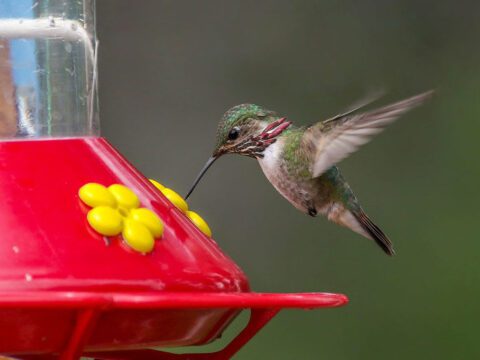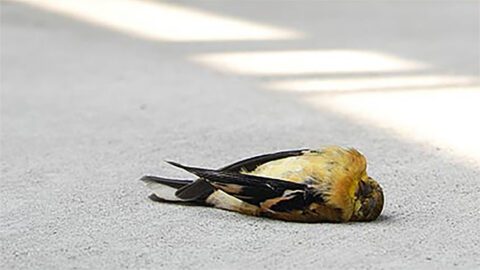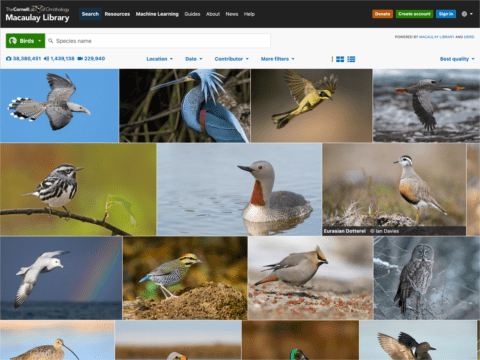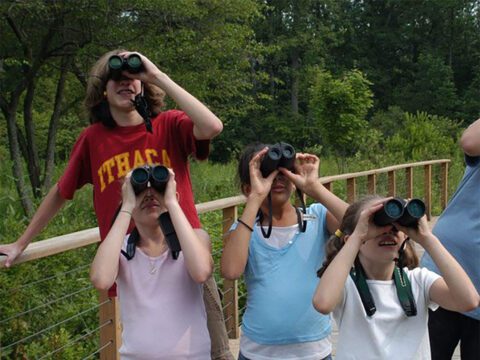On Rota with the Endangered Mariana Crow
By Kevin McGowan March 26, 2010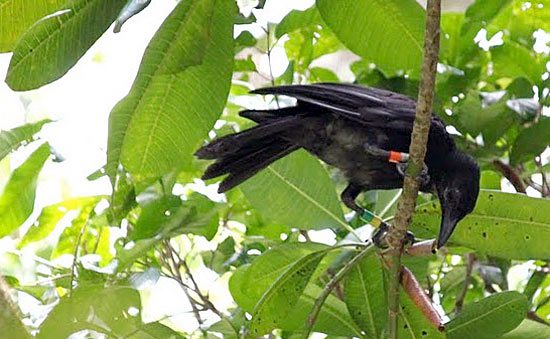
It’s an hour before dawn and our group is stumbling uphill toward our blinds. I’m carrying a small cat container that holds our captive Mariana Crow, Latte, and shredding my boots on the sharp limestone. Latte was once the breeding female in the territory adjacent to where we’re trapping, but she lost a wing during a fierce tropical storm. She was rescued by Sarah Faegre, the crow research field team leader from the University of Washington, who is as devoted and protective a mother as a bird could possibly have. Latte is amazingly calm for a wild bird; she was quite willing to take a katydid out of my hand on the first day we met.
Dawn is breaking by the time we’re in our blinds. Latte is in her cage, and we’re hoping she’ll lure the territorial crows into mist nets we’ve placed around her. A rooster Red Junglefowl walks noisily through the forest, a species the Chamorro people introduced to Rota 3,000 years ago. Latte jumps around in her cage, pounding on her perch occasionally as crows do. The local pair finds her, and they start calling in aggravation at her presence in their territory. But that’s as far as they go: they stay in the treetops, and I never even get a look at them.
Trapping crows—any species—is a royal pain in the neck. It’s easy enough to catch crows in a field, but then it’s usually some naive fledgling or yearling. Catching a specific crow takes patience and luck. So I settle in and reflect on the differences between this island crow and the American Crows I usually work with.
A crow may be just a crow to most people, but I’ve been studying them since the 1980s, and this species sure looks different to me. They’re the same color (though some of the world’s 40+ crow species are black-and-white or -gray), but the body and bill shape of this bird stands out. American Crows are big (weighing about a pound), glossy, and neatly put together, with kind of a triangular shape from bill tip to tail to feet. Mariana Crows are small (a half-pound), fluffy and scruffy, with more of an S-shaped posture. Instead of being neatly balanced they’re small behind with a great big, pointy bill. The white instead of gray bases of their body feathers stand out much more than I expected, adding to the disheveled look.
I spent several hours watching Latte indoors the two weeks we were in Rota. It was odd to watch a bird that is at once familiar and strange. She was clearly a crow, and when she pounded her perch or did a ruffle-shake to rearrange her feathers, I just had to smile in recognition. But when she called, she pulled her neck in and her tail down to accentuate her S-shape, instead of pulling the tail up and flattening the back to highlight the triangle that an American Crow would. She opened her wings slightly as she called, just like an American Crow, but instead of doing it at the wrists and forcing her wingtips together, she held her wrists tight to her side and separated the wingtips. Subtle but strikingly different to a bird-behavior geek like me.
In the field the two species are very different, too. Mariana Crows, like many southeast-Asian crows, forage in the forest canopy. Their behavior reminds me more of oropendolas than of “typical” crows of North America, Europe, Africa, and Australia, which forage on open ground. One proposed explanation for why crows never penetrated the Neotropical forests is that toucans and oropendolas were already occupying the role of big, canopy-dwelling, omnivorous bird.
After more than an hour without attracting the pair anywhere near the nets, Sarah calls it quits; she thinks Latte has had enough, and I never argue with a protective mother, especially when her “baby” is an endangered species. The crows have seen our operation, and all hope at surprising them into the nets is gone. This ends up being my last trapping attempt before heading home to Ithaca.
But, I’m ecstatic, not sad. I spent hours getting to know one of the most endangered birds on the planet, and earlier in the week even got to hold one in my hand. For an ornithologist that truly is paradise.

All About Birds
is a free resource
Available for everyone,
funded by donors like you
American Kestrel by Blair Dudeck / Macaulay Library

